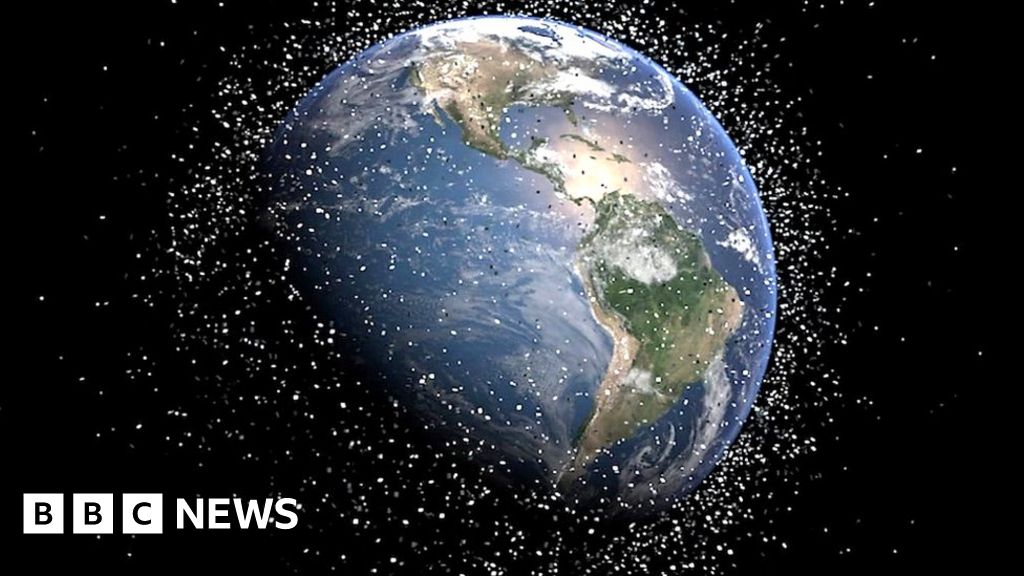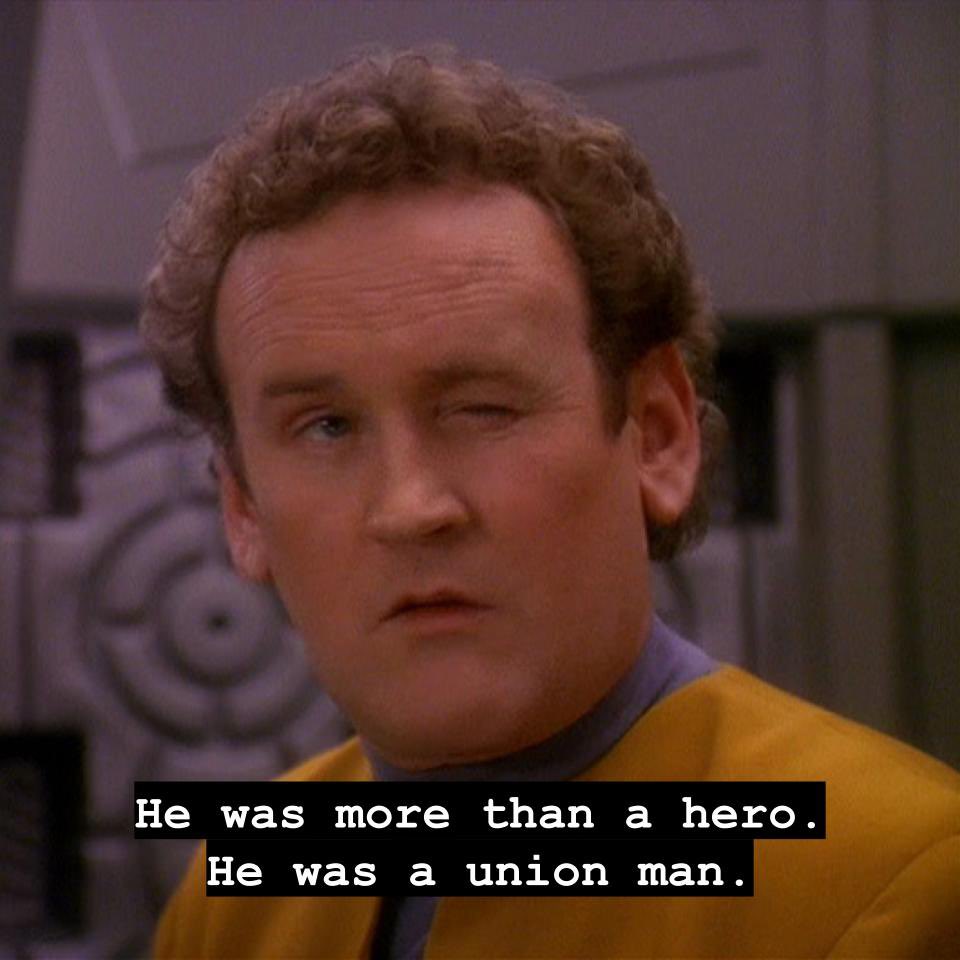Idk much about this company but I’m assuming $150,000 is nothing to them.
But I suppose it’s the precedent this sets, not the fine itself
Now they know it’s worth just 150k to litter all they want.
Not necessarily how they’re viewing it.
Once if was free, now it’s $150,000+ with the possibility of that increasing anytime
Don’t tell ole muskrat.
SpaceX satellites are in a different place so the rules and limits are different.
Dish Network’s satellite is in geostationary orbit. This is a narrow 2 dimensional circular ban of space approximately 20,000 miles away from the Earth. Earth sits in the middle of the circle. This is very valuable space because
how objects there have very little gravitational interference (rather gravity is canceled out by other source of gravity).…the satellite appears to stay in a specific spot in the sky without moving. The reason Dish Network was asked to move its old dead satellite was to make room for a new one to sit in the same place. Again, very limited space there. So when Dish Network didn’t move all the way out, it means its much harder (impossible) to use that space for someone else’s satellite. What’s worse is that it will take from 40 to 100 years for the Dish Network Satellite to fall out of orbit on its own. So unless a vehicle goes out and gets it to move it, that slot is unavailable for decades!SpaceX satellites, like thousands of others, are in LEO (low earth orbit). Instead of 20,000 miles away its about 200 miles from the surface of the Earth. Additionally, unlike geostationary, there’s no narrow band. its all the way around the Earth’s sphere. LEO is considered “self cleaning”. Any dead satellites in LEO will re-enter and burn up in 3 to 5 years. As in, do nothing and LEO satellites go away relatively soon.
EDIT: @Nighed@sffa.community correctly pointed out I mixed in a Lagrange point concept, which doesn’t apply here.
I think you are getting confused between geostationary orbit and legrange points.
Geostationary orbit is just the narrow band where you can have a stable orbit at the same speed as the earth’s rotation (so it stays in the same place in the sky) no other gravitational bodies involved.
you’re absolutely right. I’ve edited my post to remove the Lagrange point logic and correct the value of geostationary orbits. Thank you :)
Thank you and @Nighed@sffa.community. That was a great explanation.
The worry with the self cleaning band is the possibility of Kessler syndrome. See, the geosynchronous satellites are basically stationary relative to each other, and geosync is huge, so if one is junk, it’s stationary junk with nothing around it.
LEO orbits, in the other hand, criss-cross each other in a maddening dance. And if one shatters into dozens of tiny projectiles, that could shatter another and another into a cascade of space shrapnel. And then low Earth orbit is closed. No starlink, no iss, no manned spacecraft, etc.
It would self clean in a few decades. Three. Maybe five.
His fall downward and burn up in the atmosphere due to the low location. His actually leave no space junk in orbit.
Without any context, anyone who sends things to space can easily pay $150k. For context though, they are worth $3.35 billion as of September. $150k is probably less than a days electric bill for their offices.
sofa cushion money.
$150k fine to a company with ~ $17 billion in annual revenue is less than ninety cents for someone that earns $100k a year.
The $150,000 fine represents a tiny proportion of Dish’s overall revenue, which was $16.7bn in 2022.
It’d probably cost $10M-$20M to launch a falcon 9 up to that altitude alone, not to mention the tech and equipment to change its trajectory without also causing more space debris.
Fines exist only to hurt the poor.
For the rich/big businesses they are just a rounding error.
Dish/DirectTV/whatevertheyarecalledthesedays won’t be long for this world. Eventually any amount of fine will be worth more than they have which will be $0. But for now, yeah, let’s ad another 0 to this fine AT LEAST!
The $150,000 fine represents a tiny proportion of Dish’s overall revenue, which was $16.7bn in 2022.
It’d probably cost $10M-$20M to launch a falcon 9 up to that altitude alone, not to mention the tech and equipment to change its trajectory without also causing more space debris.
Should the fine not be the cost of a mission to move the satellite? It’s within our technology now.
That would make sense - the fine should be enough to pay for the satellite’s disposal.
Over and over we’ve seen companies not be held responsible for the cleanup of their projects. A lot of parallels to the fossil fuel industry, where they often abandon their wells with little recourse for the people left to clean up the pieces.
That would negatively impact future campaign contributions.
This is the real answer. This is both doing something and nothing at the same time. Pandering to both sides.
Article says the fine is for not moving the satellite far enough away from things still being used. Maybe all they have to do is send it a command to move itself further
The article says it ran out of fuel
Oh rip, I missed that
As someone who owns an appartment complex I want to fine them for roof junk.
The last apartment I was in had dozens of satellite dishes on the back of every building for a dozen apartments, they didn’t even bother to check if one was hooked up before screwing a new one into the wall
You own an apartment complex?
He can’t respond because he’s too busy painting over all the light fixtures and power outlets
As someone who is an actual living human: give your shit away.
Alright everyone, let’s get him
Starlink is losing a crazy number of satellites. Are they burning up or becoming junk?
Starlink sattelites operate in a low orbit that decays over time. They all fall back to earth eventually.
Specifically i think starlink satellites do not have any boosting thrusters, the reason important LEO satellites like the ISS don’t burn up unless intended is due to those
starlink satellites do not have any boosting thrusters
Starlink satellites actually do have Hall-effect ion thrusters, and can raise and lower their their own orbits. Though like any spacecraft, they still have a finite amount of fuel and will eventually deorbit.
I heard they’re designed to burn up in the atmosphere. Probably not an eco-friendly move, but it beats taking a satellite to the head.
Probably not an eco-friendly move
Fine powder of metals strewn over a few km², there’s more coming from outer space via micrometeorites and dust. And that bit CO² in the Stratosphere…
Yeah but you also have to manufacture and send up the satellites into LEO.
Also counterintuitively, you need some fuel to deorbit, which adds payload weight at launch and requires more fuel in the first place.
For example, getting a unit of rocket fuel to the Moon requires about ten times as much at launch.
Starlink’s only have fuel because of the initial lower orbit, as far as i know. Wasn’t that to test them, for radiation and so on?
I don’t think they need much fuel in this case unless they want to be absolutely sure that they deorbit in the right place. The satellites are so small that might not even be needed.
Yes, it takes little fuel to destabilize one’s orbit and eventually enter the atmosphere to burn up. It’s more difficult if you need to make sure that the craft doesn’t take others down during the procedure.
The satellites are in LEO so the orbit will decay on its own because of the atmospheric drag.
I don’t think they really have to worry about taking down other satellites.
A crime with a fine is a crime only for the poor, and definitely not for the guy who probably got a million dollar note commissioned just so he could wipe his ass with it
like, you’re not wrong…but also who is poor and getting a space junk fine???
what about other countries?
This is the best summary I could come up with:
The US government has issued its first ever fine to a company for leaving space junk orbiting the Earth.
The Federal Communications Commission fined Dish Network $150,000 (£125,000) for failing to move an old satellite far enough away from others in use.
Space junk is made up bits of tech that are in orbit around the Earth but are no longer in use, and risk collisions.
Officially called space debris, it includes things like old satellites and parts of spacecraft.
“The more things we have in orbit, the more risk there is of collisions, causing high-speed debris,” said Dr Megan Argo, senior lecturer in astrophysics at the University of Central Lancashire.
"Even a paint chip… coming in the wrong direction at orbital speed, which is 17,500 miles an hour [could] hit an astronaut doing a spacewalk.
The original article contains 402 words, the summary contains 136 words. Saved 66%. I’m a bot and I’m open source!
“[This could] go on and potentially hit other satellites, causing yet more debris and potentially cause a cascade reaction.”
“Just like the…”
“Sigh, yes like the Sandra Bullock movie.”
We’ve already polluted our home and now we’re polluting the sky above.
I’m not against science and I understand why space is interesting, but it’s as if my car was leaving its tires somewhere every time I’m using it.
@Dariusmiles2123 @dantheclamman
You are leaving tires everywhere. One recent study found tire dust pollution was the number one microplastic in the ocean. A different older study found it was number #2, which is still pretty bad. You almost certainly have tire dust floating around inside your body too. If they made tires purely out of rubber this wouldn’t be such a problem, but they don’t.(the double @'s are because I’m on mastodon, that’s just what it does.)
Yeah I know I’m a tiny bit of my tires, but I ain’t leaving a whole tire behind just because it’s difficult to bring home 😅
But what you said is interesting and it shows that we’re polluting the world in so many different ways.
Still we can’t be perfect but we can try to improve.
I wonder how much of the rise in reported latex allergies is the prevalence of tire bits in the environment. Iirc, some of the rise is from increased awareness and some is it attributed to increased latex glove usage in medical settings due to the AIDS epidemic. But are tires also a relevant factor?
(Am latex sensitive, have never used latex gloves even in an educational setting because my high school chem teacher was allergic so we had nitrile in the lab)
Meanwhile here’s Starlink with 25,000 near misses and accelerating, doubling every 6 months.
Starlink satellites are in a much lower orbit. They’re an issue, but fundamentally not the same.
As in, a starlink satellite that fails, also quickly falls out of orbit.
Is that a real pic? Like millions of satellites and junk just revolving around earth.
One of the biggest fears I tend to think of about in space is Kessler Syndrome where one collision creates a shotgun blast of debris that increases the chances for more collisions (cascade effect). If you’ve seen the movie Gravity you get a great example of how it would go down.
I don’t know nt get it. They only moved it half the distance that they needed, because it ran out of fuel. It’s a relatively short distance and I’d expect space movement to keep moving, after I initiated, as there is no friction. Why did it stop moving once they were headed away?

























